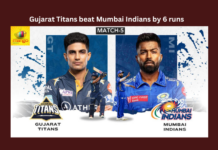After a two day meeting in Srinagar on 18th and 19th, the Centre and the States launched the Goods and Services Tax (GST.) An agreed upon four tier tax structure will be implemented by the 1st of July.
The four tier tax structure will be at 5%, 12%, 18% and 28% for 1211 products decided during these two days. Basic food commodities like fresh fruits, vegetables, meat, bread, flour, salt, etc., have been exempted from this tax structure.
Petrol is out of the GST extent and will not be affected.
A brief of commonly used products and which tax slab they come under has been listed below.
Most packed products like frozen vegetables, coffee, tea, coal, kerosene and medicines will come under the 5% tax slab. Services that will be charged under the 5% tax structure will be transport services such as railways and air transport. Small restaurants will also come under this tax slab.
The 12% tax will be applied to frozen meat products, cheese, ghee, butter, packed dry fruits and animal fat. This tax slab will also be applied for Ayurvedic medicines and cellphones. Non AC hotels, fertilisers, business class air tickets and work contracts will all be applied to the 12% tax structure.
On the third tax tier, 18% will be applied to refined sugar, preserved vegetables, soups, instant food mixes, cakes, pastries, ice cream and mineral water. Non food products like, tissues, envelopes, tampons, notebooks, cameras, speakers, and monitors will fall under the 18% tax slab. Services from AC hotels with liquor licence, telecom services, IT services, financial services and branded garments will attract an 18% tax under GST.
The highest tier of 28% will attract molasses, aerated water, paint, deodrants, shaving cream, after shave, sunscreen, ceramic tiles, weighing machine, water heater, hair shampoo, pan masala, vending machines, vaccum cleaner, automobiles, motorcycles, aircrafts for personal use. The 5 star hotels, race betting clubs and cinemas will fall under the 28% tax slab under GST.
This will be the biggest tax reform since independence. While it may all seem confusing the basic understanding is that most essential commodities will become cheaper while luxury items will be a bit more expensive than before.


































